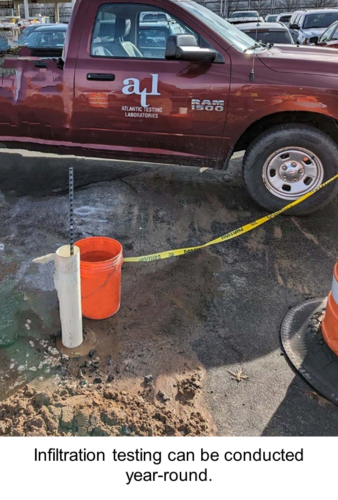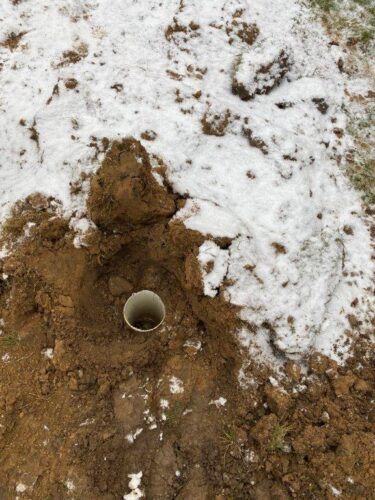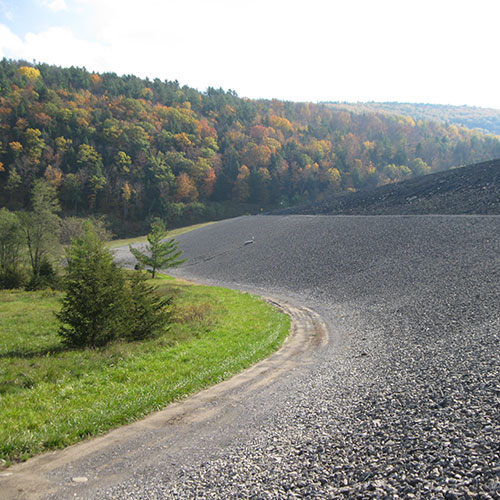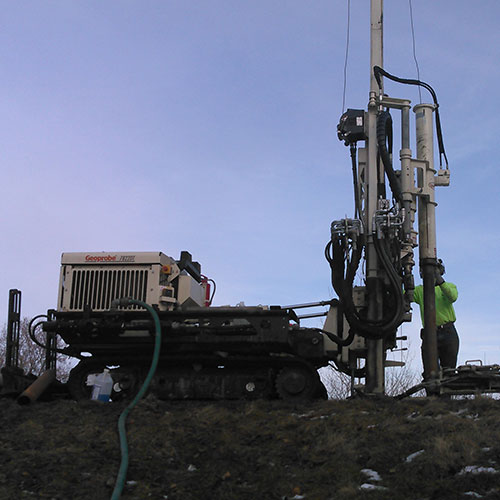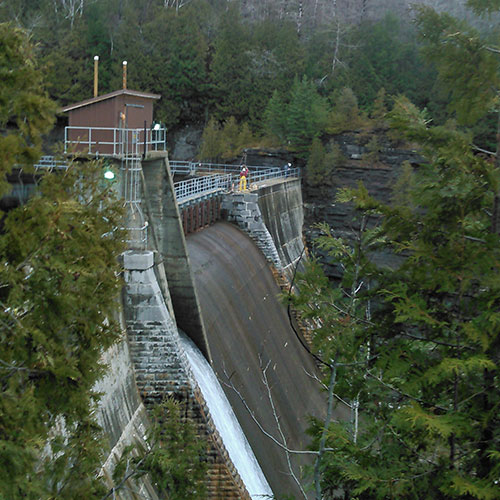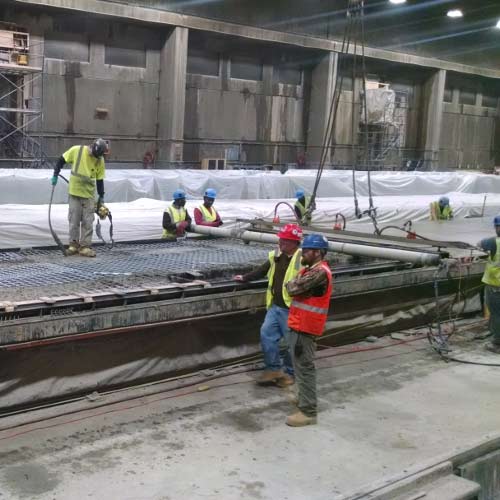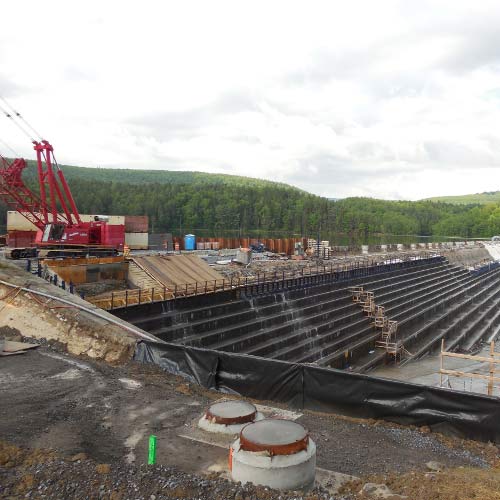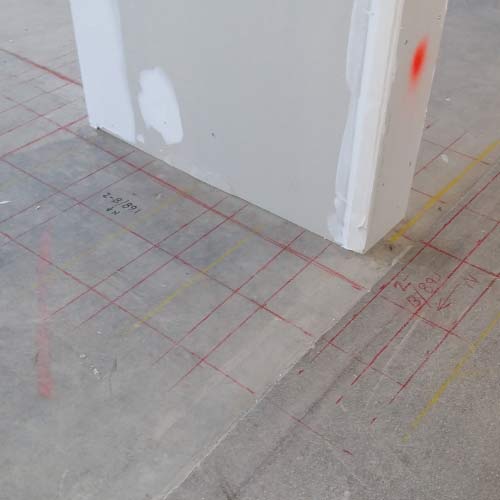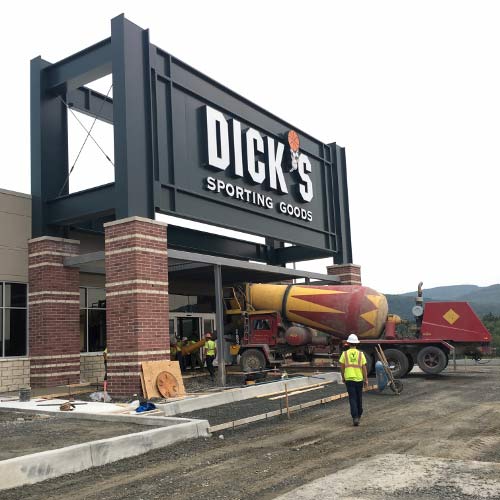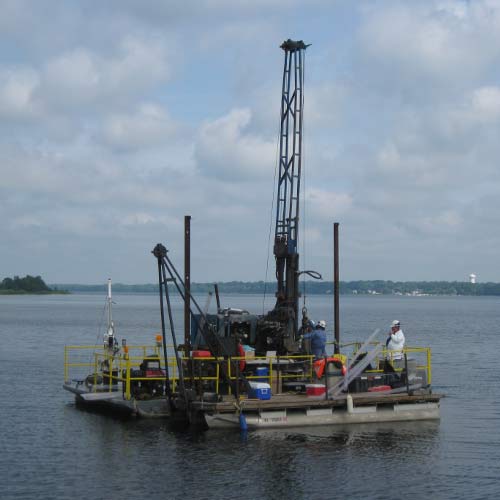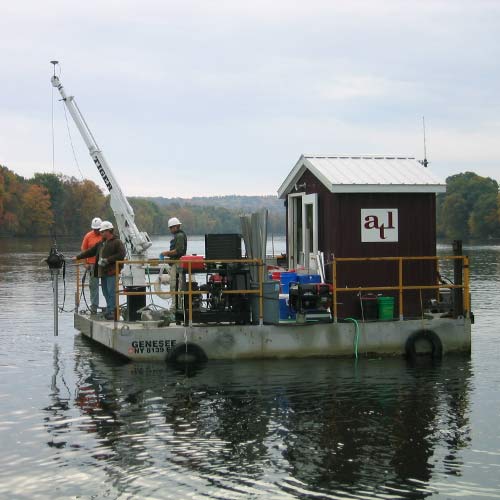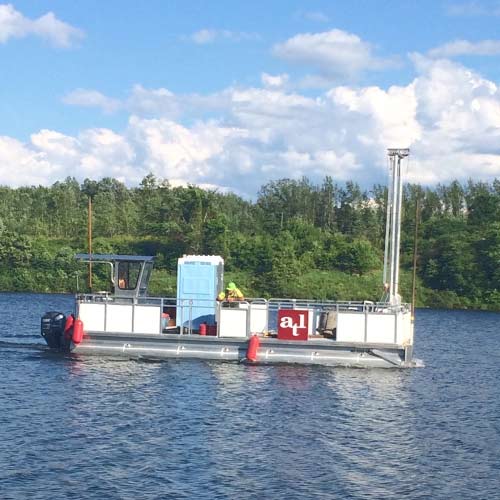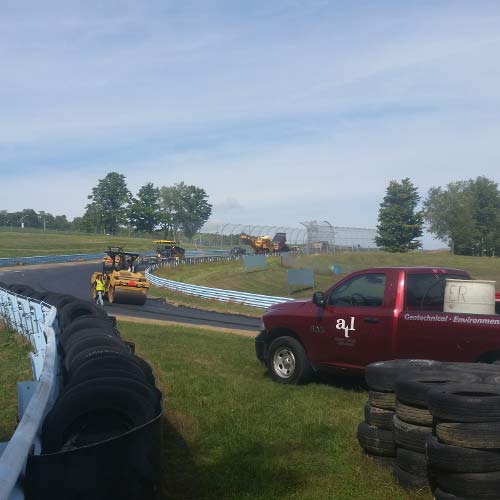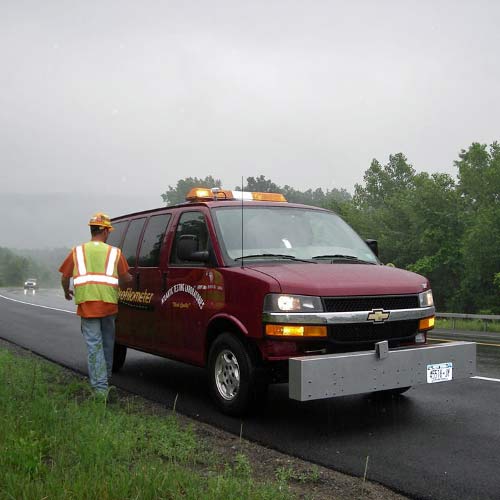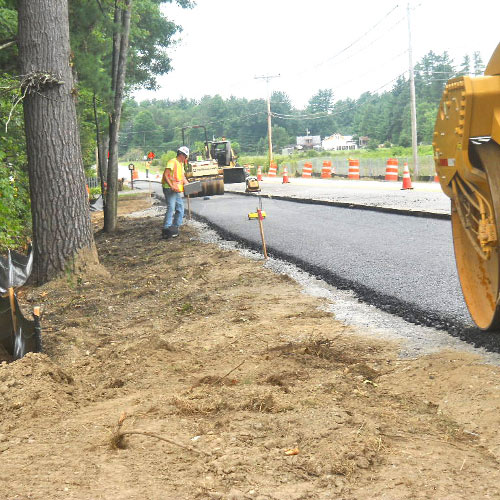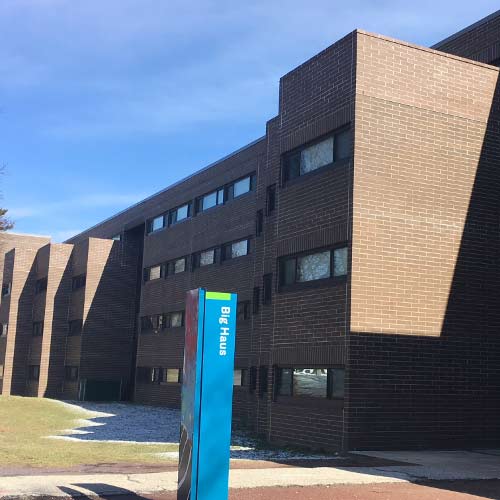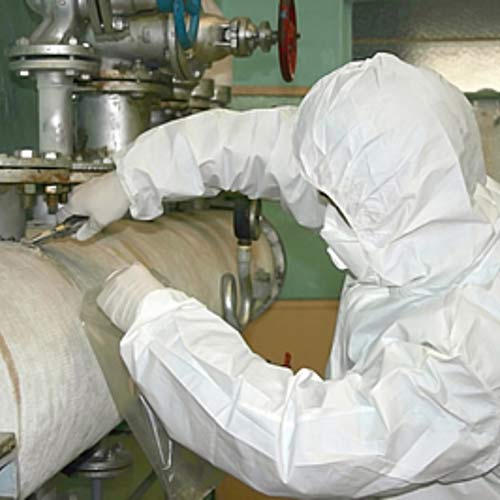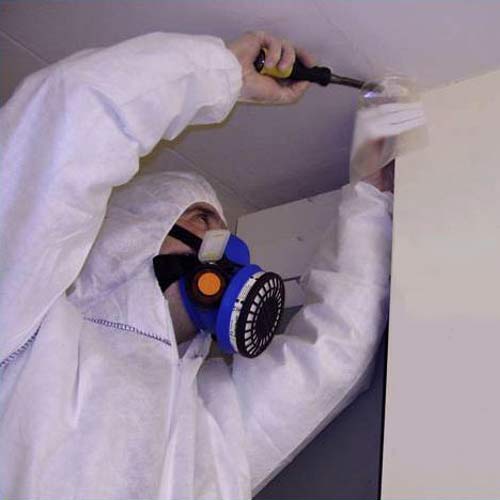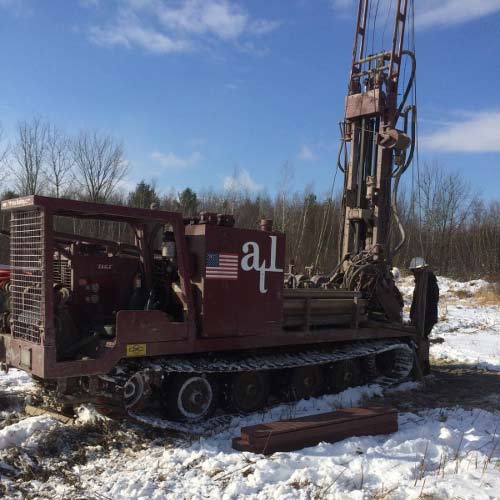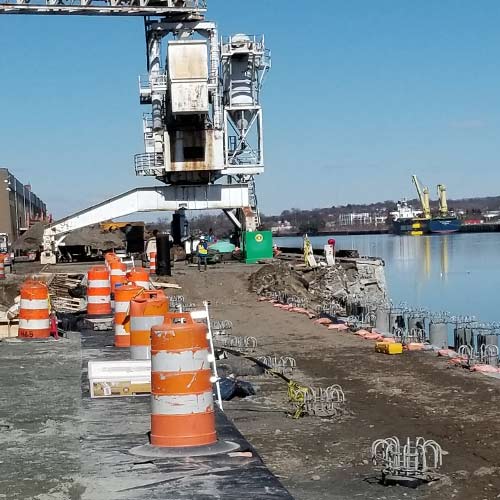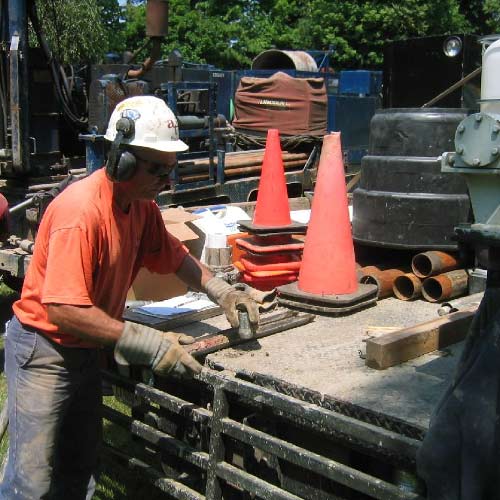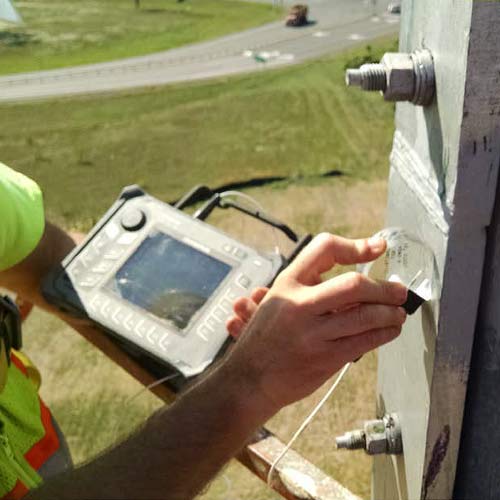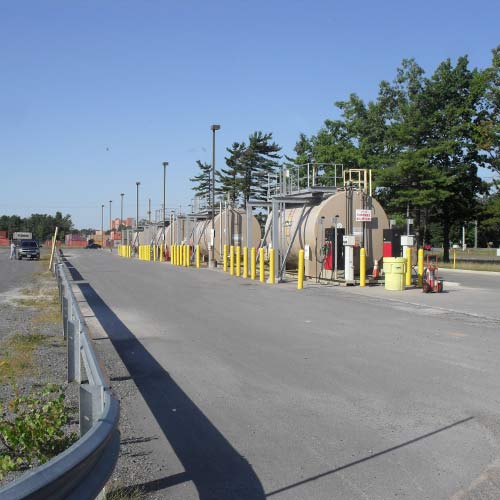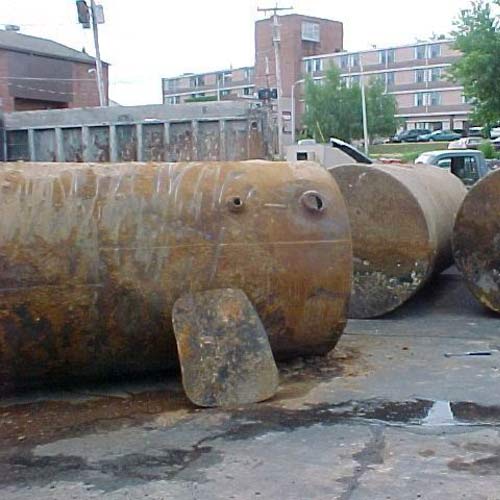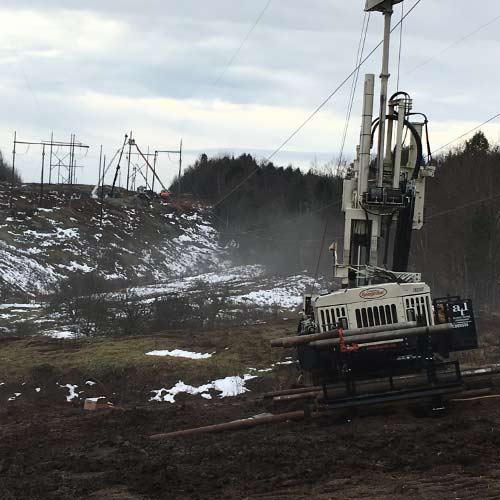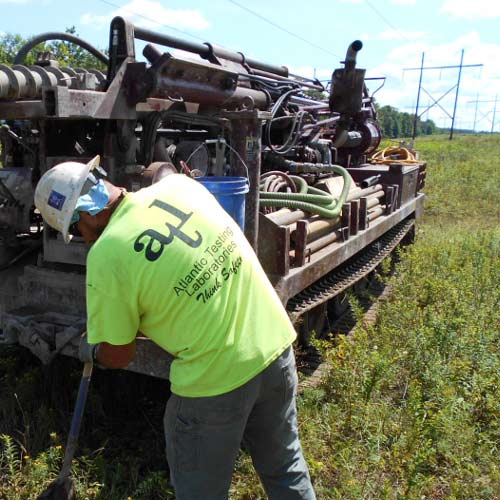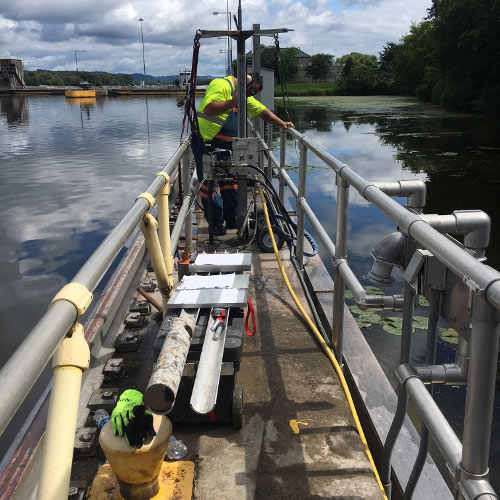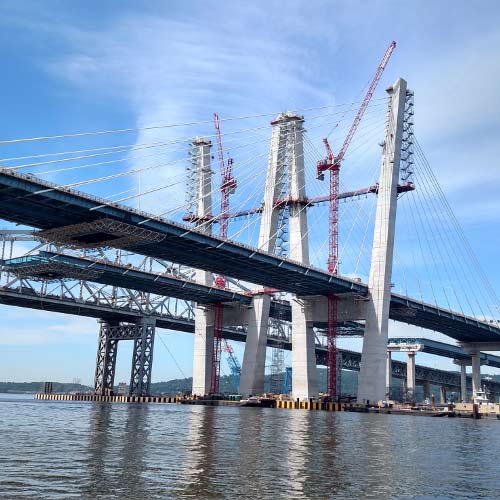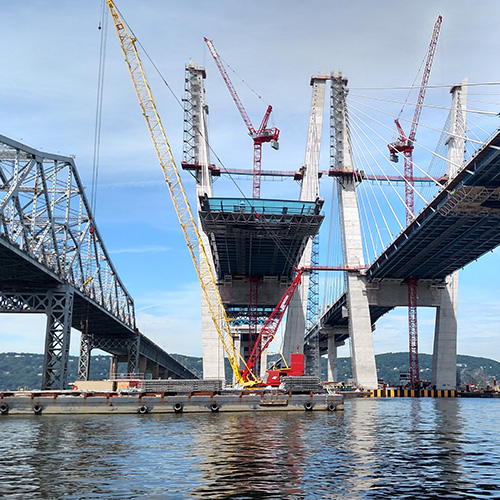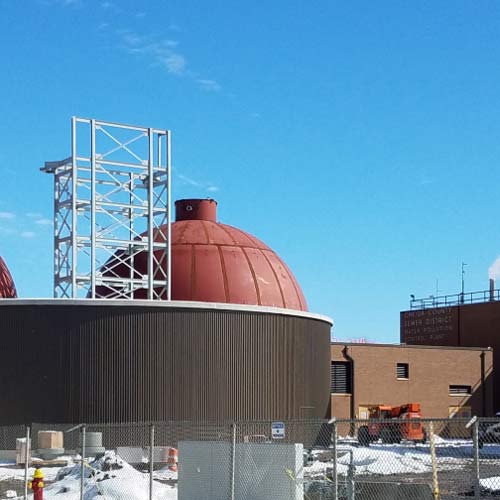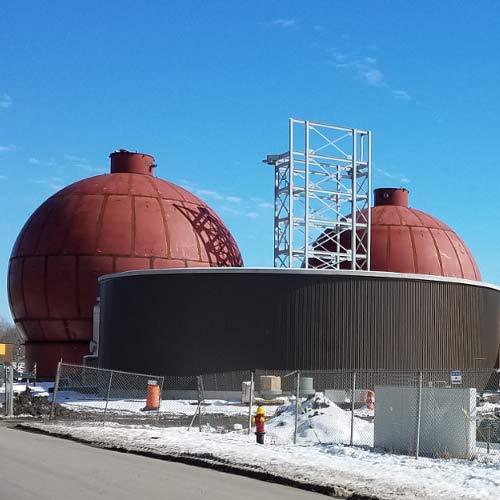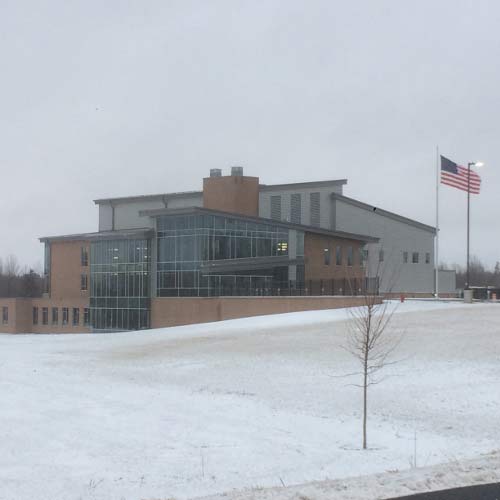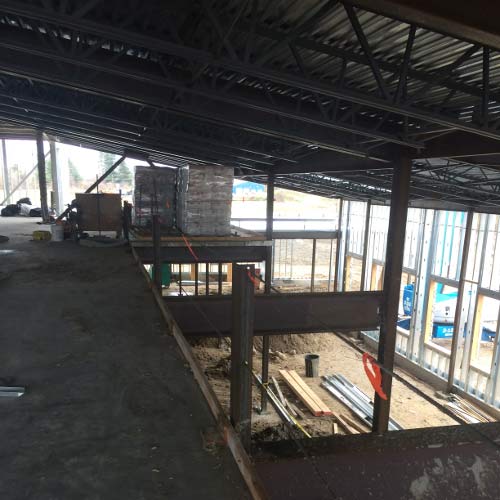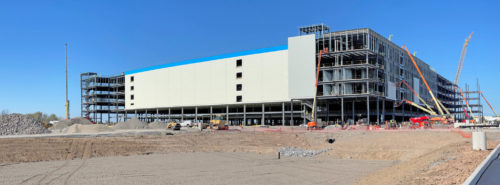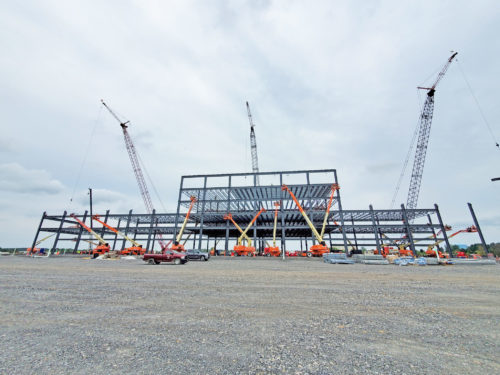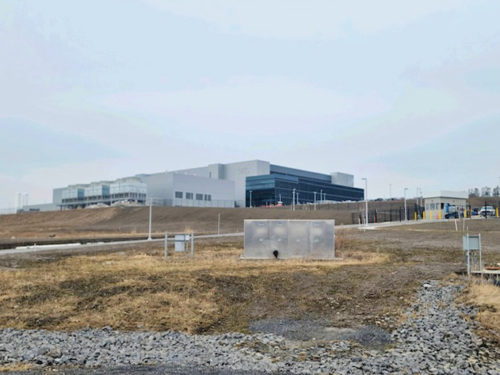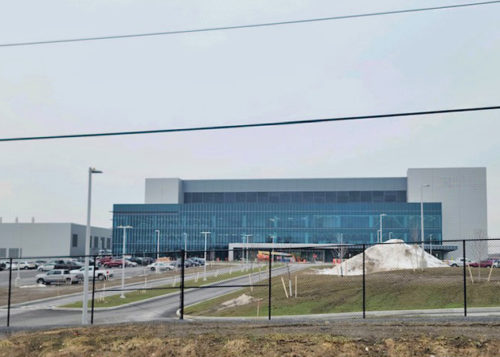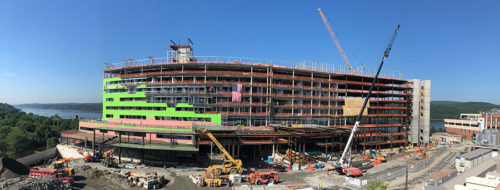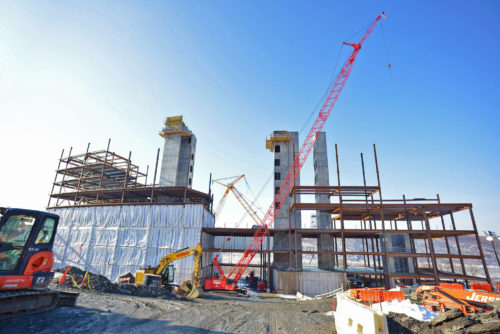Click the following link to view the PDF of this paper: Infiltration Testing for Stormwater Management Design

Brian T. Barnes, PE
Senior Engineer
Atlantic Testing Laboratories
Stormwater runoff from urban development can be damaging to natural water resources due to increases in runoff volumes and the negative impact on water quality from impervious surfaces. An undeveloped landscape typically produces less runoff as stormwater is absorbed into and through the soil. Impervious surfaces like pavement and rooftops collect pollutants and sediment that may be carried into waterways by the excess runoff that these surfaces generate. Effective stormwater management helps to alleviate some of the negative impacts of development.
Stormwater infiltration is a stormwater management practice (SMP) that captures and temporarily stores runoff before allowing it to infiltrate into the soil. Infiltration testing in accordance with the New York State Stormwater Management Design Manual – Appendix D protocols is a requirement to assess the feasibility and design of infiltration type SMPs.
While sometimes confused with percolation, which is the movement of water through the subsurface due to gravity, infiltration occurs when surface water penetrates the ground. For stormwater management purposes, a soil infiltration rate is assessed by observing the drop in a column of water within an open-bottom vertical pipe as it infiltrates a specified soil horizon. Infiltration testing can be performed in either a test pit or soil boring. Whichever method is used, it is important to determine the subsurface soil, bedrock, and groundwater conditions at and below the proposed infiltration facility bottom. The testing should be done under the supervision of a professional engineer, soil scientist, or geologist. Testing typically requires two days to complete, as the soil being assessed must be presoaked 24 hours prior to conducting the test. After 24 hours, water is added to the test pipe and the drop in water level over time is measured to determine the soil’s infiltration rate.
There are two phases of testing, although it is possible to skip the first and move directly to the second phase. The first phase, referred to as initial feasibility testing, is sometimes performed to determine if full-scale testing is warranted. In some cases, this can eliminate the need for more costly testing by screening out sites that are unsuitable for infiltration type SMPs. In this phase of testing, one test per site is performed to determine if the site is likely to meet the minimum infiltration rate of 0.5 inches per hour. Alternatively, the qualified professional can review previous testing, such as septic tank percolation tests, existing geotechnical reports, or published soil maps that show the hydrologic group of the onsite soil units. The second phase, referred to as concept design testing, is a full-scale assessment of the site and is required in each stormwater management area. The number of required tests in each area is based on the size of the SMP (i.e., a larger infiltration basin requires more testing than a smaller basin).
Stormwater management is critical to reducing the negative impacts of development on natural waterways. By capturing increased stormwater runoff and mitigating the transport of pollutants from impervious surfaces, an infiltration basin can be an effective tool to help regulate the stormwater discharges of developed sites. Infiltration testing conducted by qualified professionals is essential to ensuring that these SMPs are designed to be effective.
For more information, contact Brian Barnes, PE at 315-735-3309, info@atlantictesting.com, or visit AtlanticTesting.com.
|
ASSOCIATED SERVICES |
 |

